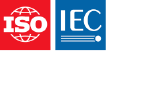Abstract
ISO/IEC 15444-6:2003 defines a normative but optional file format for storing compound images using the JPEG 2000 file format family architecture. A compound image is an image that may contain scanned images, synthetic images or both, and that preferably requires a mix of continuous tone and bi-level compression methods. Besides defining a binary container for a mix of continuous-tone and bi-level images, this format defines a composition model that describes how the multiple images are combined to generate a compound image. This composition model is based on the multi-layer Mixed Raster Content (MRC) imaging model, defined in ITU-T T.44 | ISO/IEC 16485.
The name of the file format defined in this part of ISO/IEC 15444 is JPEG 200 Multi-layer or JPM. A JPM file uses the file format architecture specified in ITU-T Rec T.800 | ISO/IEC 15444-1. Therefore, a JPM file is a contiguous sequence of boxes. It uses boxes defined for the JP2 file format in ITU-T Rec T.800 | ISO/IEC 15444-1 and the JPX file format defined in ITU-T Rec T.801 | ISO/IEC 15444-2. When stored in traditional computer file systems, files that conform to this International Standard should have the file extension .jpm. On Macintosh file systems, the type code should be 'jpm\040'.
ISO/IEC 15444-6:2003 is useful for applications that store multiple pages, images with mixed content, and/or images that need more structure than provided in JP2. A JPM file stores a compound image document as a sequence of pages, each of which consists of a sequence of layout objects, each of which in turn consists of an MRC mask-image object pair. A JPM file can support MRC-encoded data, binary-only objects and pages, JPEG 2000-compressed objects and pages, or a mixture of all. Each of these elements (page, layout object, mask/image object) may have a label and associated metadata.
In addition, a JPM file contains a main page collection, which is used to organize and navigate the pages in a compound image document. A key feature of JPM is its support of fragmented JPEG 2000 codestreams to enable progressive and interactive rendering in web applications. A JPM file may be self-contained in that it contains all the data needed to composite the page or pages in the file. A JPM file may also reference images and data in external files. The JPM web profile supports JPEG 2000 and JPEG for continuous tone compression, and G4, JBIG2 and JPEG 2000 for bi-level compression.
In summary, ISO/IEC 15444-6:2003 specifies:
- a binary container for multiple bi-level and continuous-tone images used to represent a compound image,
- a mechanism by which multiple images can be combined into a single compound image, based on the Mixed Raster Content model,
- a mechanism for grouping multiple images in a hierarchy of layout objects, pages and page collections,
- a mechanism for storing JPEG 2000 and other compressed image data formats,
- a mechanism by which metadata can be included in files specified by ISO/IEC 15444-6:2003.
General information
-
Status: WithdrawnPublication date: 2003-10Stage: Withdrawal of International Standard [95.99]
-
Edition: 1Number of pages: 71
-
Technical Committee :ISO/IEC JTC 1/SC 29ICS :35.040.30
- RSS updates
Life cycle
-
Now
-
00
Preliminary
-
10
Proposal
-
20
Preparatory
-
30
Committee
-
40
Enquiry
-
50
Approval
-
60
Publication
-
90
Review
-
95
Withdrawal
Amendments
Provide additional content; available for purchase; not included in the text of the existing standard.WithdrawnISO/IEC 15444-6:2003/Amd 1:2007
-
00
-
Revised by
PublishedISO/IEC 15444-6:2013

